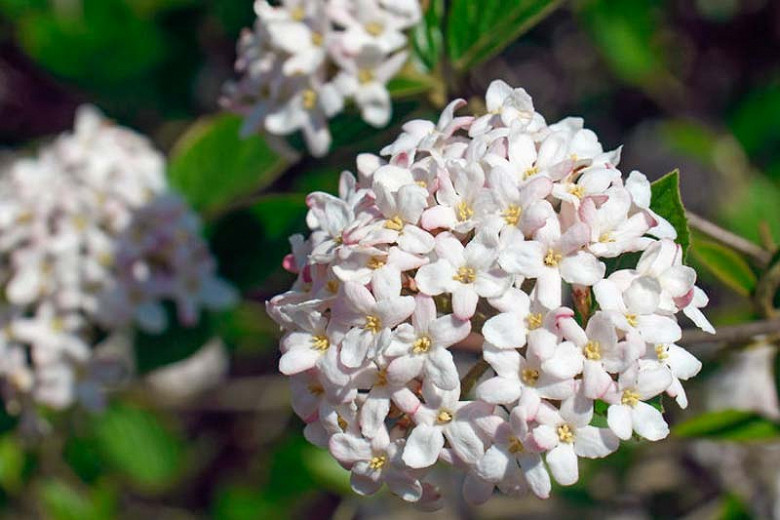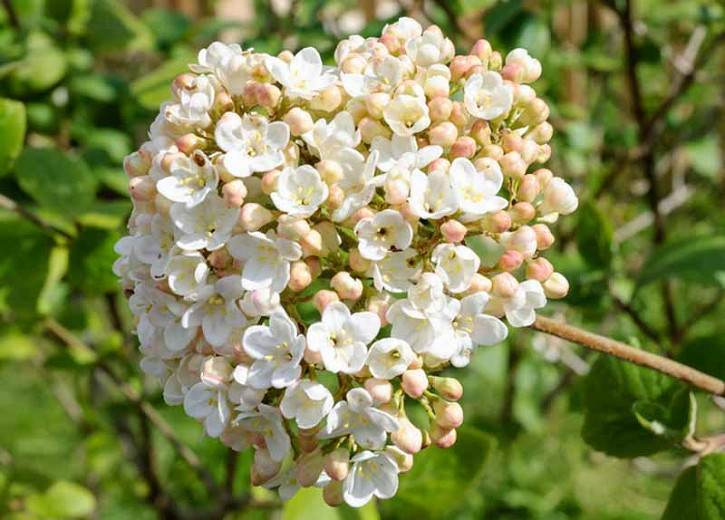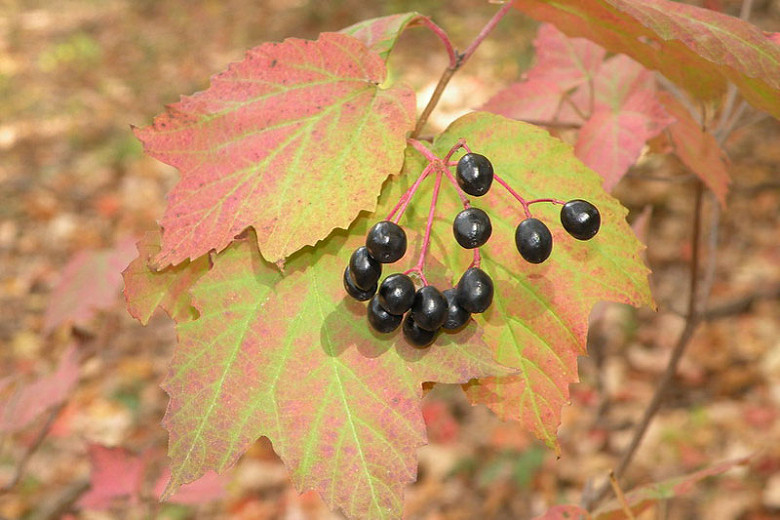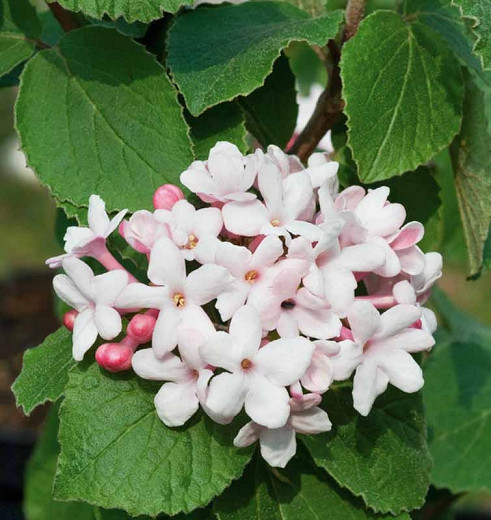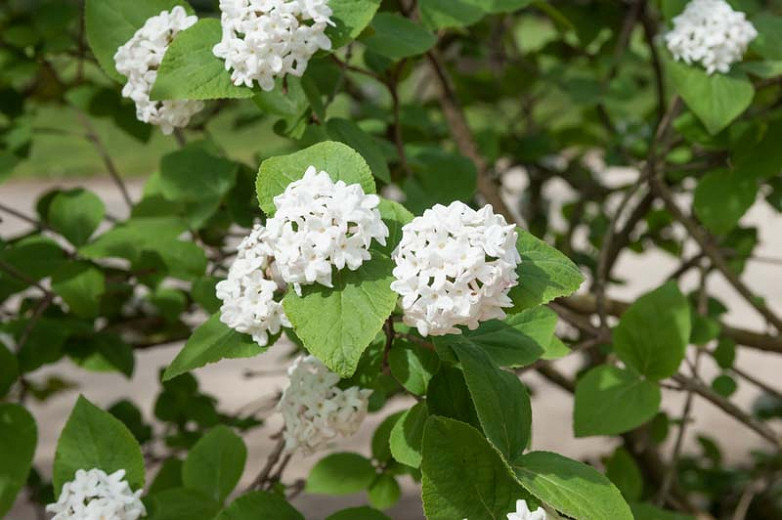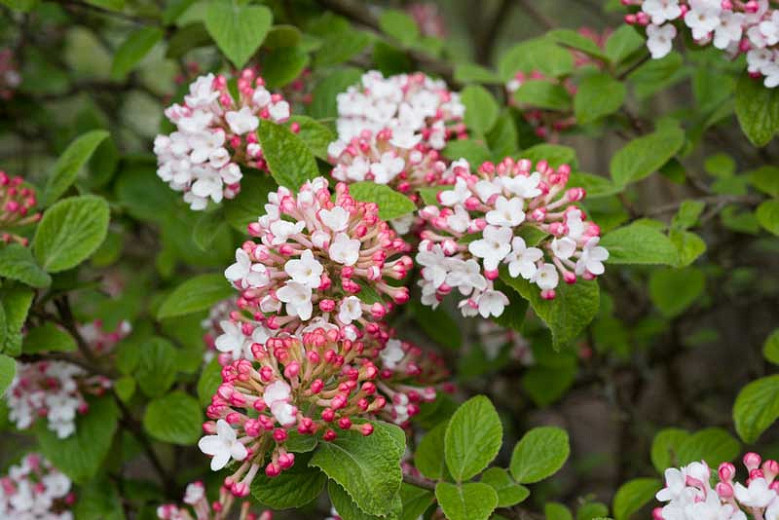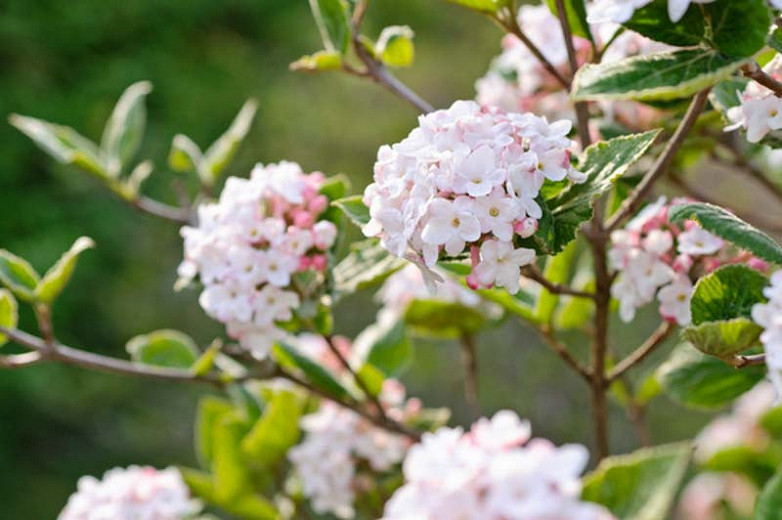Viburnum × burkwoodii Mohawk (Burkwood Viburnum)
Wonderfully fragrant, Viburnum × burkwoodii ‘Mohawk’ (Burkwood Viburnum) is a compact, upright, multi-stemmed, semi-evergreen shrub with ovate, glossy, dark green leaves that turn attractive shades of orange and red in fall, except where evergreen (USDA Zones 7 and 8). In mid-spring, red flower buds open to very fragrant white flowers, arranged in snowball clusters. Lasting up to 2 weeks, they give way to pendulous clusters of red berries which ripen black in mid to late summer.
Wonderfully fragrant, Viburnum × burkwoodii 'Mohawk' (Burkwood Viburnum) is a compact, upright, multi-stemmed, semi-evergreen shrub with ovate, glossy, dark green leaves that turn attractive shades of orange and red in fall, except where evergreen (USDA Zones 7 and 8). In mid-spring, red flower buds open to very fragrant white flowers, arranged in snowball clusters. Lasting up to 2 weeks, they give way to pendulous clusters of red berries which ripen black in mid to late summer. Hidden by the foliage, the fruits are however not particularly showy. To have the best cross-pollination and fruit display, plant in groups rather than as specimens. Perfect for the shrub border, as a flowering hedge, or as a handsome specimen.
- Recipient of the prestigious Award of Garden Merit of the Royal Horticultural Society and Pennsylvania Horticultural Society Gold Metal Plant.
- Grows up to 8-10 ft. tall and wide (240-300 cm).
- A full sun or part shade lover, this plant is easily grown in average, moderately fertile, humus-rich, medium moisture, well-drained soils. Tolerates a wide range of soil types. Adaptable to poor soils, compacted soils, soils of various pH, heat, drought, and pollution.
- Perfect as a specimen plant or in shrub borders, makes striking hedges and screens and lovely foundation plantings. A great shrub for the perennial border too! Plant your Viburnum near high-traffic areas to enjoy its wonderful fragrance.
- Attractive to butterflies, hummingbirds, and birds.
- Low maintenance, this plant has no serious insect or disease problems but watch for leaf spots and aphids.
- Prune as required immediately after flowering.
- Propagate by softwood cuttings in summer, semi-ripe cuttings from midsummer to fall, or hardwood cuttings in winter.
- Fruit if eaten can cause a mild stomach upset.
Requirements
| Hardiness | 4 – 8 |
|---|---|
| Heat Zones | 1 – 8 |
| Climate Zones | 2, 2A, 2B, 3, 3A, 3B, 4, 5, 6, 7, 8, 9, 10, 11, 12, 14, 15, 16, 17, 18, 19, 20, 21, 22, 23, 24 |
| Plant Type | Shrubs |
| Plant Family | Viburnum |
| Exposure | Full Sun, Partial Sun |
| Season of Interest | Spring (Mid,Late)Summer (Early,Mid,Late)Fall |
| Height | 8' – 10' (240cm – 3m) |
| Spread | 8' – 10' (240cm – 3m) |
| Spacing | 96″ – 120″ (240cm – 300cm) |
| Water Needs | Average |
| Maintenance | Low |
| Soil Type | Chalk, Clay, Loam, Sand |
| Soil pH | Acid, Alkaline, Neutral |
| Soil Drainage | Moist but Well-Drained, Well-Drained |
| Characteristics | Fragrant, Plant of Merit, Showy, Semi-Evergreen, Fruit & Berries |
| Tolerance | Drought |
| Attracts | Birds, Butterflies, Hummingbirds |
| Garden Uses | Beds and Borders, Hedges and Screens, Wall-Side Borders |
| Garden Styles | Coastal Garden, Informal and Cottage, Traditional Garden |
